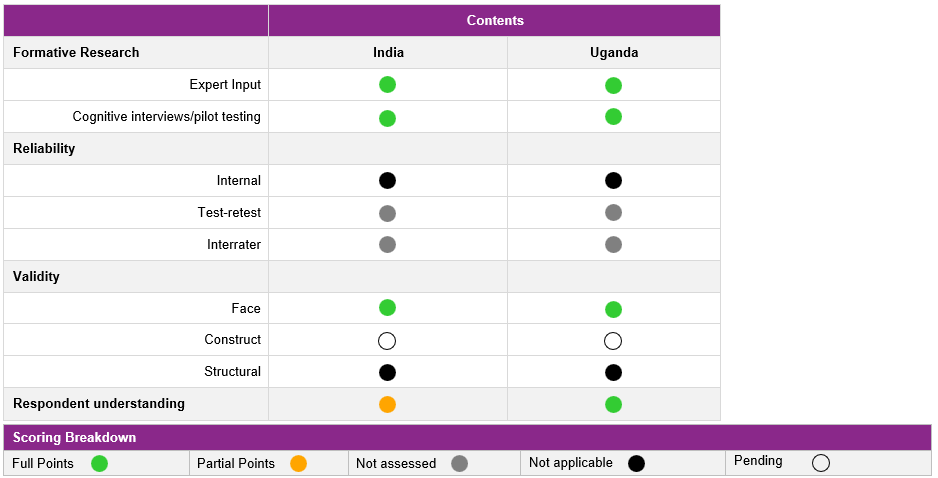Improving women’s decision-making power is crucial for advancing gender equality. But evidence shows that wives and husbands have systematically different perceptions of who makes these decisions across contexts and intra-household disagreement is often not random. This could be because the standard decision-making answer options “wife, husband, joint” are too categorical and do not allow us to capture the strength in decision-making power (considered as a continuum), or because men and women have a different understanding of what sole/joint decision-making is. This module allows us to elicit responses regarding subjective assessments of a hypothetical married couple under different scenarios that involve the wife and the husband making household decisions around large household purchases.
Link to: tool content and guidelines, CTO file, and statistical annex
Duration: This tool takes on average 5.92 minutes to be implemented
Permitted use of the tool: all users are free to use the tool with citation: “MAGNET (2023). Unpacking Joint Decision-making. https://magnet.ifpri.info/unpacking-joint-decision-making/”
Tool sample
1. Survey questions
A. Who usually makes decisions about making major household purchases?
- You
- Your spouse/partner
- You and your spouse/partner jointly
- Someone else/Other
B. Imagine a decision-making ladder, where=1 means you make decisions about major household purchases, and =5 means your spouse makes decisions about major household purchases. On which step of the ladder does your household stand?

2. Vignettes:
A. Separate streams: Helen and Samson are a couple who both use their own money to make major household purchases. Unless Helen knows that Samson won’t like a particular appliance or asset, Helen typically goes ahead and buys it without discussing the purchase with Samson in advance. The same holds for Samson.
B. Male-controlled pooled savings: Peter is a man who uses the common household savings pot to make major household purchases without consulting his wife, Maria, beforehand. He does, however, ask for her input on the specifics of the purchase, such as whether to buy the item new or used, which brand to buy, the maximum price-point, and where to store it in the house.
Response Options
Imagine a decision-making ladder, where=1 means the wife makes decisions about major household purchases, and =5 means the husband makes decisions about major household purchase. On which step of the ladder does this household stand?
Measurement properties
- Geographies Tested: India, Uganda
- Populations included: Female, Male
- Age range: Adults
For details on these testing metrics, visit our scoring methodology page.

 International Food Policy Research Institute
International Food Policy Research Institute